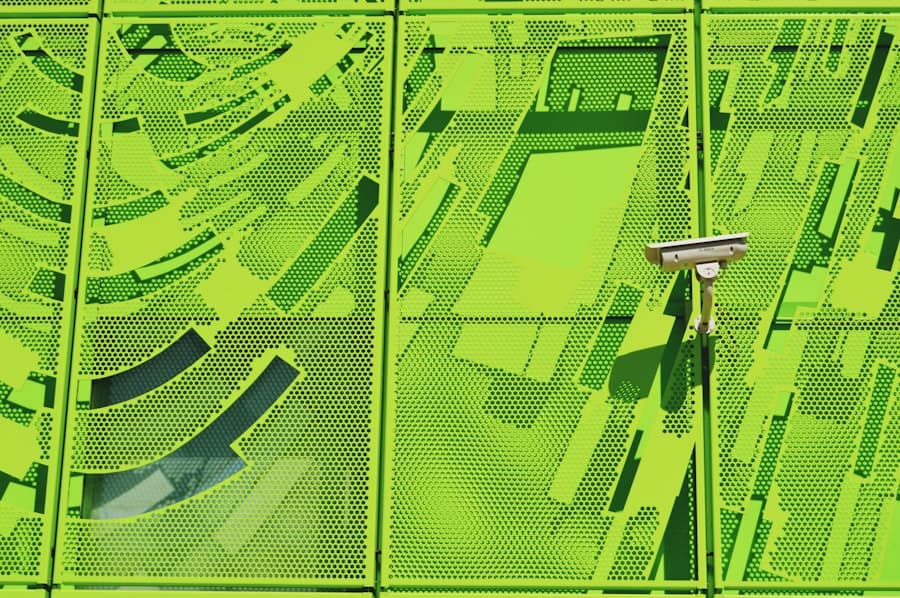Understanding security threats is essential for implementing effective security measures in any business or organization. These threats can be categorized into physical and digital risks. Physical threats include theft, vandalism, and violence, while digital threats encompass hacking, data breaches, and cyber attacks.
The landscape of security threats is dynamic, with new risks constantly emerging. To maintain a robust security posture, organizations must stay informed about the latest threats and trends in the security field. This knowledge enables businesses to develop proactive strategies and implement appropriate safeguards to protect their assets, personnel, and information.
Comprehending the motivations behind security threats is equally important. Threat actors may include disgruntled employees seeking revenge, cybercriminals aiming to steal sensitive data, or competitors attempting to gain a market advantage. By analyzing these motivations, organizations can better anticipate potential incidents and design more effective preventive measures.
A comprehensive understanding of both the types of security threats and the underlying motivations allows businesses to create holistic security strategies. These strategies should address risks from multiple angles, incorporating physical security measures, cybersecurity protocols, employee training, and incident response plans. By taking this multifaceted approach, organizations can significantly enhance their overall security posture and reduce their vulnerability to various threats.
Key Takeaways
- Security threats can come in various forms such as physical, cyber, and internal threats, and it is important to understand and identify these threats to effectively mitigate them.
- Assessing vulnerabilities involves identifying weak points in security systems, processes, and infrastructure that could be exploited by potential threats.
- Implementing access control measures such as key card entry systems, biometric scanners, and visitor management protocols can help prevent unauthorized access to sensitive areas.
- Utilizing surveillance and monitoring systems such as CCTV cameras and alarm systems can help in detecting and deterring security threats.
- Training and educating staff on security protocols, emergency procedures, and best practices can greatly enhance the overall security posture of an organization.
- Implementing emergency response plans and conducting regular drills can help in preparing staff to effectively respond to security incidents.
- Regularly reviewing and updating security measures is crucial to adapt to evolving security threats and ensure that security systems remain effective.
Assessing Vulnerabilities
Types of Vulnerabilities
Vulnerabilities can take many forms. Physical vulnerabilities may include inadequate lighting, broken locks, or outdated security systems. Digital vulnerabilities may include unsecured networks, outdated software, or lack of encryption protocols. Human vulnerabilities may include lack of training, negligent behavior, or disgruntled employees.
Conducting a Comprehensive Vulnerability Assessment
Conducting a thorough vulnerability assessment can help businesses identify weak points in their security measures and take proactive steps to address them. By doing so, businesses can gain valuable insights into their security posture and take targeted actions to strengthen their defenses.
Ongoing Vulnerability Assessment and Review
It is essential to note that vulnerability assessments should be an ongoing process, as new vulnerabilities may emerge over time. Regularly reviewing and updating vulnerability assessments can help businesses stay ahead of potential security risks and ensure that their security measures remain effective.
Implementing Access Control Measures

One of the key components of a comprehensive security strategy is implementing access control measures. Access control measures are designed to regulate who has access to certain areas or information within a business or organization. This can include physical access control measures such as keycard entry systems, biometric scanners, and security guards, as well as digital access control measures such as password protection, encryption, and multi-factor authentication.
By implementing access control measures, businesses can limit the risk of unauthorized access to sensitive areas or information. This can help prevent theft, vandalism, and unauthorized use of digital systems. Access control measures can also help businesses track and monitor who has accessed certain areas or information, which can be valuable in the event of a security incident.
It is important for businesses to regularly review and update their access control measures to ensure that they remain effective. As technology evolves and security threats change, access control measures may need to be adjusted to address new risks. By staying proactive and vigilant, businesses can maintain strong access control measures that effectively protect their assets and information.
Utilizing Surveillance and Monitoring Systems
| Metrics | Value |
|---|---|
| Number of surveillance cameras installed | 150 |
| Percentage of monitored areas covered | 85% |
| Incidents detected by surveillance systems | 25 |
| Response time to incidents | 10 minutes |
Surveillance and monitoring systems are essential tools for enhancing security measures within a business or organization. Surveillance systems can include CCTV cameras, motion sensors, and alarm systems, while monitoring systems can include network monitoring software, intrusion detection systems, and security analytics tools. These systems are designed to provide real-time visibility into potential security threats and enable businesses to respond quickly and effectively.
Surveillance and monitoring systems can help businesses deter potential security threats by creating a visible presence of security measures. In the event of a security incident, these systems can provide valuable evidence for investigations and help identify the perpetrators. Additionally, monitoring systems can help businesses detect potential security breaches in digital systems and take proactive steps to prevent data breaches or cyber attacks.
It is important for businesses to invest in high-quality surveillance and monitoring systems that are tailored to their specific needs. This may include strategically placing CCTV cameras in high-risk areas, implementing advanced network monitoring software, or integrating alarm systems with local law enforcement. By utilizing surveillance and monitoring systems effectively, businesses can significantly enhance their overall security posture.
Training and Educating Staff
An often overlooked but critical aspect of effective security measures is training and educating staff. Employees are often the first line of defense against security threats, and it is essential that they are equipped with the knowledge and skills to recognize and respond to potential risks. Training and educating staff on security best practices can help create a culture of security awareness within a business or organization.
Security training for staff may include topics such as recognizing social engineering tactics, identifying phishing emails, responding to physical security incidents, and following proper access control procedures. Additionally, staff should be educated on the importance of maintaining strong passwords, securing sensitive information, and reporting any suspicious activity. Regular training sessions and refresher courses can help ensure that staff remain up-to-date on the latest security best practices.
It is also important for businesses to provide clear guidelines and procedures for staff to follow in the event of a security incident. By investing in the training and education of staff, businesses can significantly strengthen their overall security posture.
Implementing Emergency Response Plans

In addition to proactive security measures, businesses should also have comprehensive emergency response plans in place. Emergency response plans outline the steps that should be taken in the event of a security incident or other emergency situation. These plans should be tailored to the specific needs of the business or organization and should address various scenarios such as natural disasters, physical security breaches, cyber attacks, and workplace violence.
Emergency response plans should include clear protocols for notifying authorities, evacuating staff and customers, securing sensitive information, and communicating with stakeholders. It is important for businesses to regularly review and practice their emergency response plans to ensure that staff are familiar with the procedures and can respond effectively in high-stress situations. By implementing comprehensive emergency response plans, businesses can minimize the impact of security incidents and ensure the safety of their staff and customers.
Additionally, having well-defined emergency response plans in place can help businesses demonstrate their commitment to safety and security to stakeholders and the public.
Regularly Reviewing and Updating Security Measures
Finally, it is crucial for businesses to regularly review and update their security measures to ensure that they remain effective against evolving security threats. This may include conducting regular vulnerability assessments, testing access control measures, updating surveillance and monitoring systems, providing ongoing training for staff, and refining emergency response plans. By staying proactive and vigilant in reviewing and updating security measures, businesses can stay ahead of potential risks and maintain a strong security posture.
This may also involve staying informed about the latest security trends and best practices through industry publications, conferences, and networking with other security professionals. In conclusion, implementing effective security measures requires a comprehensive understanding of security threats, proactive assessment of vulnerabilities, strategic implementation of access control measures and surveillance systems, ongoing training and education for staff, comprehensive emergency response plans, and regular review and updating of security measures. By taking a holistic approach to security measures, businesses can better protect themselves against potential risks and demonstrate their commitment to safety and security to stakeholders and the public.
If you are interested in learning more about the security measures in the metaverse, you may also want to check out this article on community and culture in the metaverse: user-generated content in the metaverse. This article discusses how user-generated content can impact the culture and community within the metaverse, and the security measures that may need to be put in place to protect users and their creations.
FAQs
What are security measures?
Security measures are actions or precautions taken to protect people, property, or information from potential harm or danger. These measures can include physical security, cybersecurity, and emergency preparedness.
Why are security measures important?
Security measures are important because they help to prevent and mitigate potential threats and risks. They can help to protect individuals, organizations, and assets from harm, theft, and unauthorized access.
What are some examples of security measures?
Examples of security measures include installing security cameras, using access control systems, implementing firewalls and antivirus software for cybersecurity, conducting background checks on employees, and creating emergency response plans.
How can security measures be implemented?
Security measures can be implemented through a combination of physical, technical, and administrative controls. This can include installing security equipment, training employees on security protocols, and regularly updating security policies and procedures.
What are the benefits of implementing security measures?
The benefits of implementing security measures include reducing the risk of security breaches, protecting valuable assets, ensuring the safety of individuals, and maintaining the trust and confidence of customers and stakeholders.











Leave a Reply